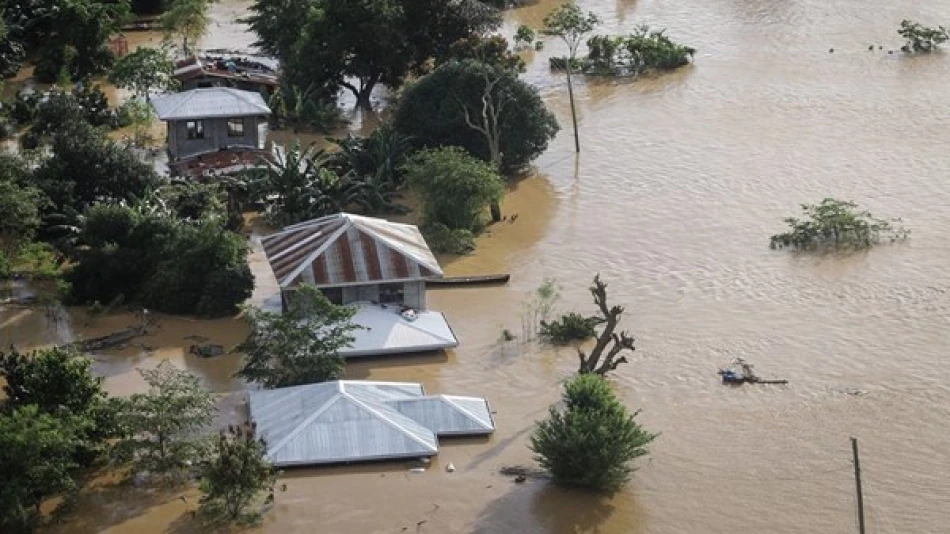
Massive Evacuation of 70,000 Filipinos Amid Devastating Floods in the Philippines
Typhoon Usman Displaces 70,000 as Philippines Faces Mounting Climate Crisis
The Philippines confronts another devastating natural disaster as Typhoon Usman forces 70,000 residents from their homes around Manila, highlighting the archipelago's growing vulnerability to increasingly severe weather patterns. With at least two people missing and a new tropical depression threatening the region, the disaster underscores the urgent need for enhanced climate resilience in one of the world's most disaster-prone nations.
Immediate Impact and Emergency Response
Heavy overnight rainfall caused the Marikina River to overflow, prompting authorities to shut down schools and government offices across the capital and surrounding provinces on Tuesday. The flooding demonstrates the cascading effects of extreme weather on urban infrastructure, particularly in densely populated areas where millions depend on consistent access to education and public services.
More than 23,000 people living along the riverbanks sought emergency shelter in schools, municipal halls, and covered courtyards during the night. An additional 44,000 residents were evacuated from Quezon City and Caloocan in Greater Manila, illustrating the scale of displacement that has become increasingly common in the region.
Vulnerable Communities Bear the Brunt
Wilmer Tan from Marikina City's rescue services noted that evacuees typically come from "low-lying areas along streams" that feed into the main river system. This pattern reflects a broader regional challenge where the most economically vulnerable populations often live in flood-prone areas due to limited housing alternatives.
Human Cost and Ongoing Search Operations
In Caloocan, rescue teams continue searching for an elderly woman and her driver who were swept away while attempting to cross a bridge. Their vehicle was discovered Monday evening with shattered windows, but both occupants remain missing. John Paul Nitis from the Emergency Operations Center confirmed that "rescue operations are ongoing, but so far, neither has been found."
The incident highlights the deadly risks posed by flash flooding in urban areas, where residents often underestimate the power of moving water during extreme weather events.
Broader Regional Impact
Typhoon Usman, which struck the country in late November, has already claimed at least six lives and left six others missing across central and southern Philippines, according to the National Disaster Risk Reduction and Management Council. The storm's extended impact on Manila demonstrates how tropical systems can continue causing destruction long after their initial landfall.
Improvised Survival in Flooded Communities
In the small city of Quinta on the capital's outskirts, residents have resorted to using polystyrene boxes and old refrigerators as makeshift boats to navigate floodwaters. These scenes of improvised survival reflect both the resilience of Filipino communities and the inadequacy of formal disaster preparedness infrastructure.
Climate Change Implications
The Philippines faces approximately 20 typhoons annually, but climate scientists warn that these storms are becoming more intense and unpredictable. The current disaster occurs as the country grapples with a new tropical depression, suggesting that back-to-back extreme weather events may become the norm rather than the exception.
This pattern mirrors trends observed across Southeast Asia, where countries like Vietnam and Thailand have also experienced more frequent and severe flooding in recent years. The economic costs of repeated evacuations, infrastructure damage, and business disruptions pose significant challenges for developing economies already strained by global economic pressures.
Long-term Resilience Challenges
The scale of displacement around Manila—one of the world's most densely populated metropolitan areas—raises questions about urban planning and disaster preparedness in megacities across the developing world. With climate change expected to intensify extreme weather patterns, the Philippines faces mounting pressure to invest in flood control systems, early warning networks, and climate-resilient infrastructure.
The recurring nature of these disasters also highlights the need for comprehensive relocation programs for communities in high-risk areas, though such initiatives require substantial resources and political will that often prove elusive in the aftermath of immediate crisis response.
 Layla Al Mansoori
Layla Al Mansoori







